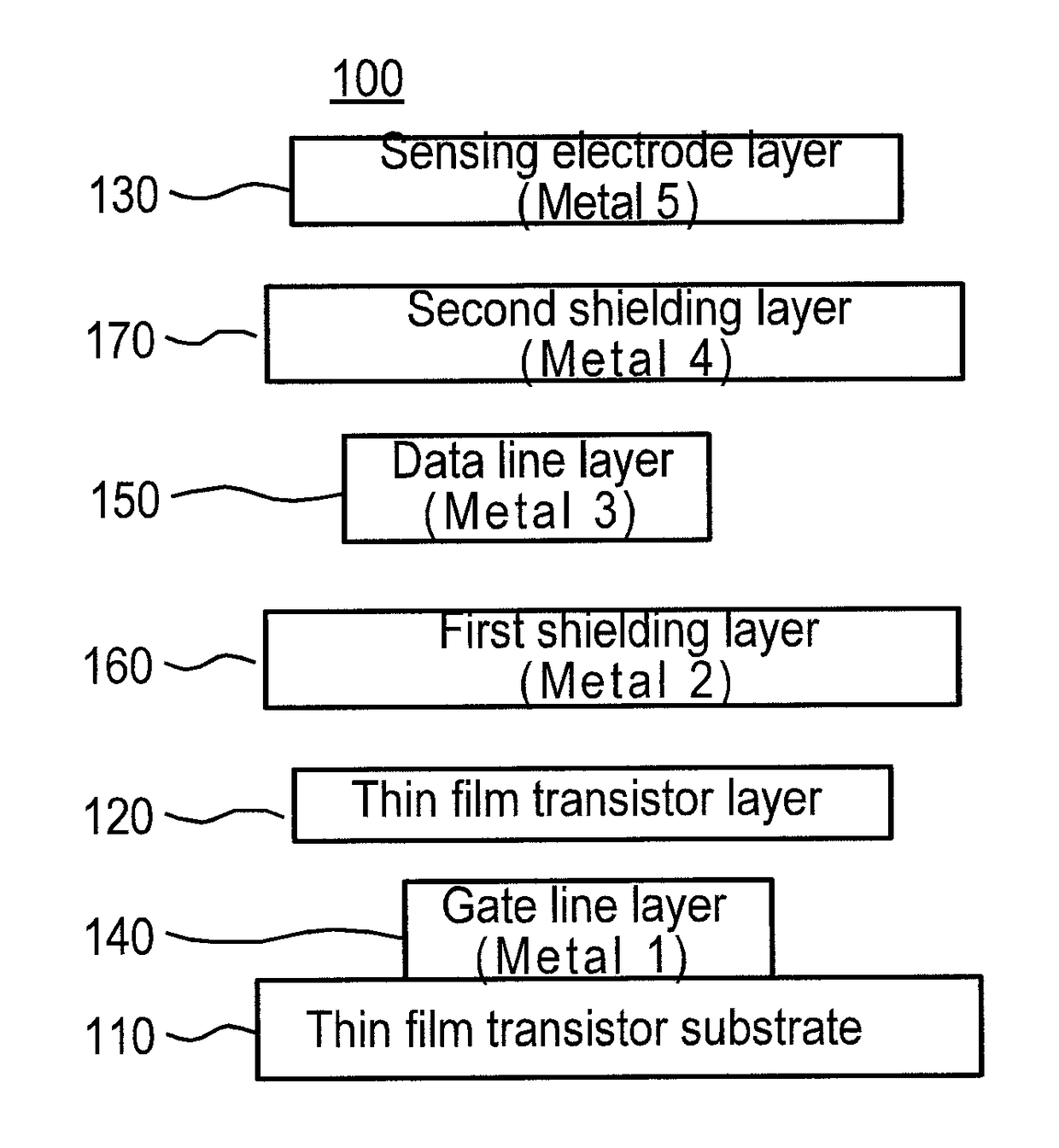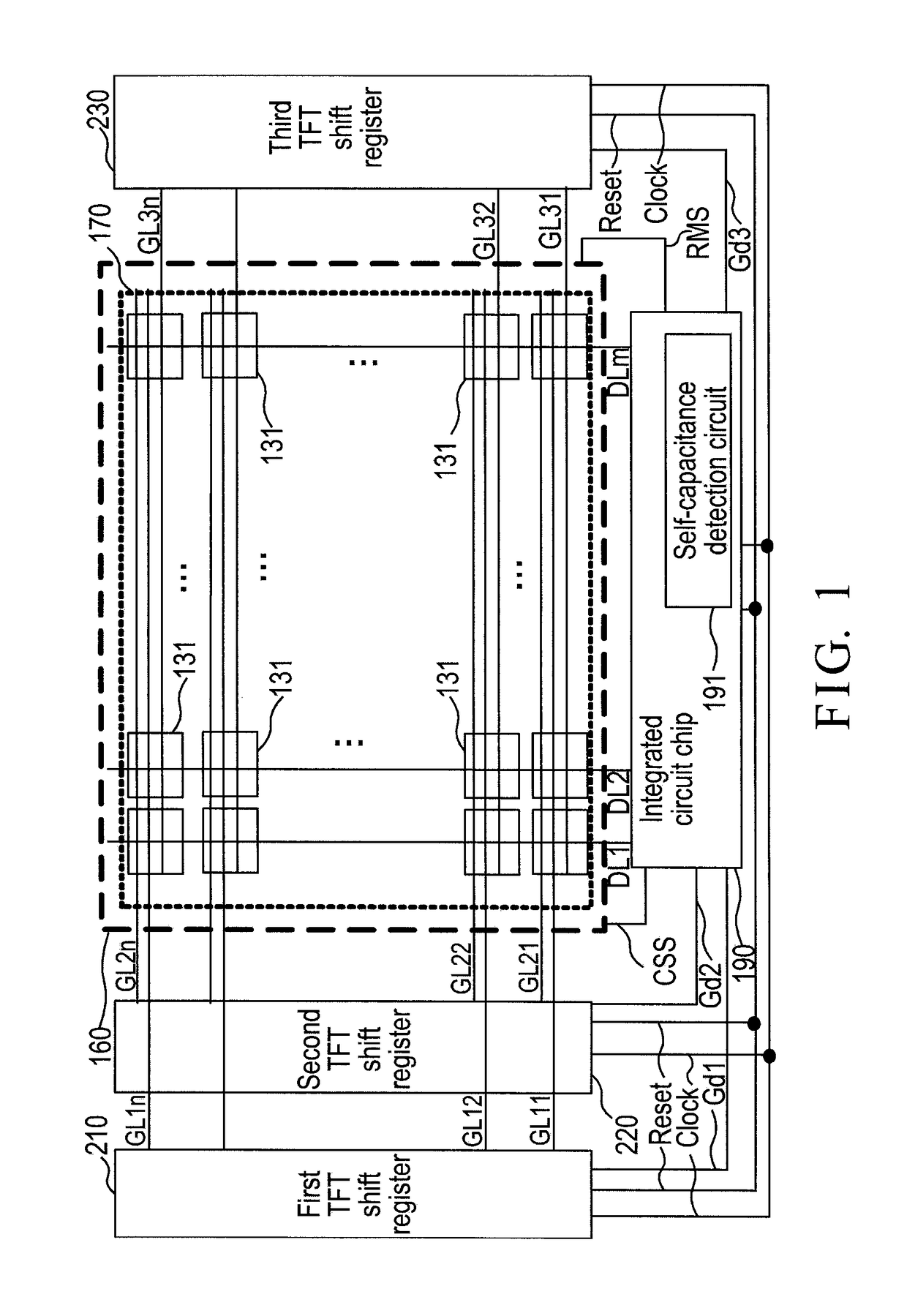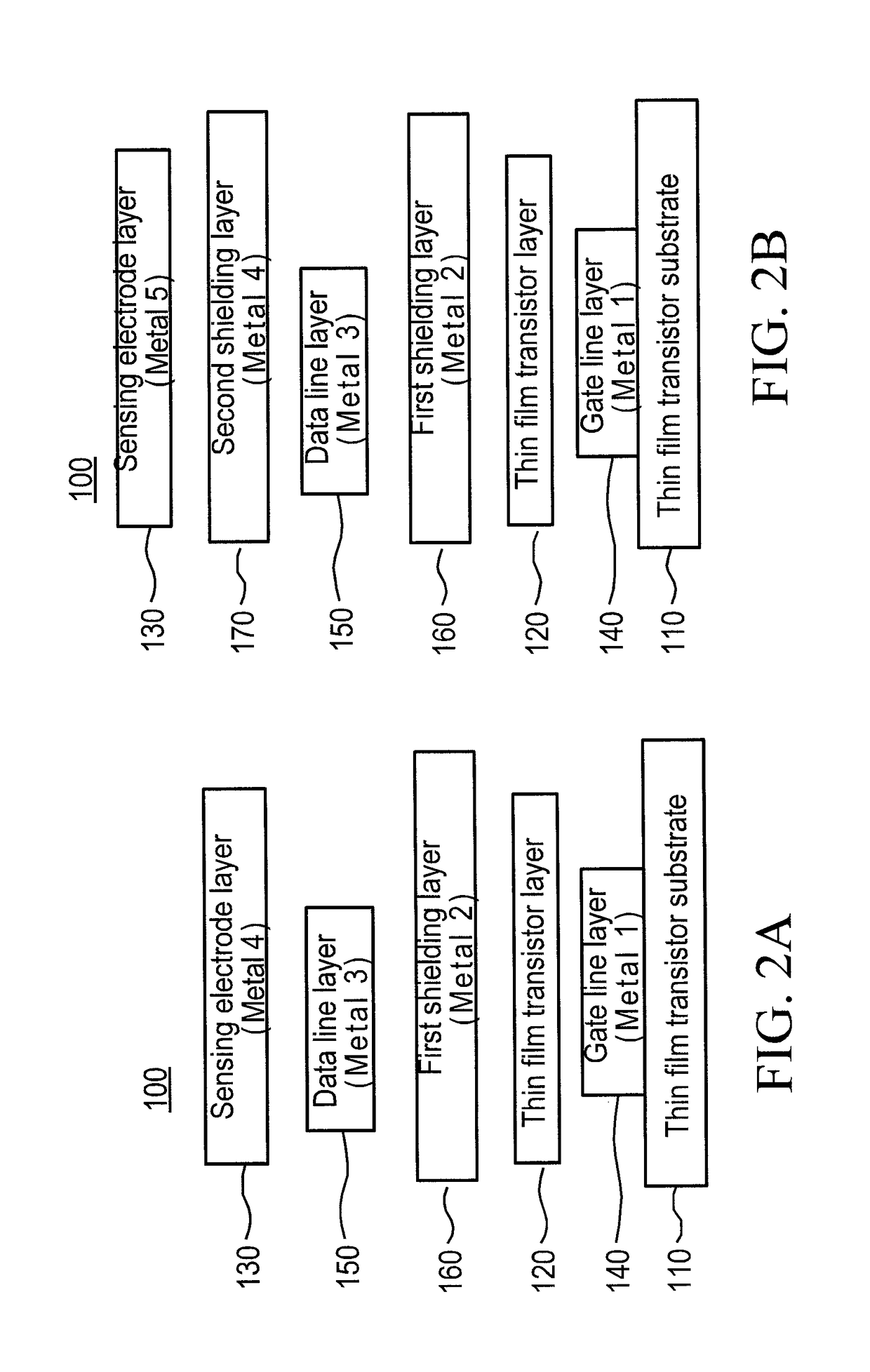Interference-free fingerprint identification device
a fingerprint identification and interference-free technology, applied in the field of fingerprint identification, can solve the problems of reducing the sensitivity of fingerprint identification, reducing the signal size, and affecting the accuracy of fingerprint identification, so as to reduce the chip area, reduce the cost, and simplify the package
- Summary
- Abstract
- Description
- Claims
- Application Information
AI Technical Summary
Benefits of technology
Problems solved by technology
Method used
Image
Examples
first embodiment
[0034]FIG. 3A and FIG. 3B are another cross-sectional views of the interference-free fingerprint identification device in accordance with the present disclosure, wherein the insulation layers between the conductive layers are represented by spaces and are not specifically indicated. In comparison with FIG. 2A and FIG. 2B, FIG. 3A and FIG. 3B are each additionally provided with a black matrix layer (BM) 180. The black matrix layer 180 may be black color and disposed between the thin film transistor substrate 110 and the sensing electrode layer 130. The difference between FIGS. 3A and 3B and FIGS. 2A and 2B is that the thin film transistor substrate 110 is located at top in FIG. 3A and FIG. 3B. That is, in FIG. 3A and FIG. 3B, the thin film transistor substrate 110 may serve as a protective layer of the plural fingerprint sensing electrodes 131 in the sensing electrode layer 130 when the thin film transistor substrate 110 is made of a glass material having a sufficient hardness. The t...
second embodiment
[0052]FIG. 13 is a schematic diagram of an interference-free fingerprint identification device in accordance with the present disclosure. This embodiment is similar to that of FIG. 1 except that the second shielding layer 170 is removed in FIG. 13. Plural common data lines CDL1, CDL2, . . . , CDLn are arranged in the gate line layer 140, which are parallel with the gate lines GL11, GL12, . . . , GL1n, GL21, GL22, . . . , GL2n, GL31, GL32, . . . , GL3n. The common data line CDL1 is electrically connected to the sources or drains of a plurality of the thin film transistors corresponding to the fingerprint sensing electrodes 131 of the first row, the common data line CDL2 is electrically connected to the sources or drains of a plurality of the thin film transistors corresponding to the finger sensing electrodes 131 of the second row, and so on. The plural common data lines CDL1, CDL2, CDLn are electrically connected together, and the integrated circuit chip 190 outputs a convergence st...
third embodiment
[0053]FIG. 14 is a schematic diagram of an interference-free fingerprint identification device 100 in accordance with the present disclosure. This embodiment is similar to that of FIG. 13 except that the first TFT shift register 210, the second TFT shift register 220 and the third TFT shift register 230 are removed in FIG. 14. The integrated circuit chip 190 directly outputs a control signal to the gate lines GL11, GL12, GL1n, GL21, GL22, GL2n, GL31, GL32, GL3n, CDL1, CDL2, . . . , CDLn through a gate line bus GLBus. Plural common data lines CDL1, CDL2, CDLn are disposed in the gate line layer 140. The common data line CDL1 is electrically connected to the sources or drains of a plurality of the thin film transistors corresponding to the fingerprint sensing electrodes 131 of the first row, the common data line CDL2 is electrically connected to the sources or drains of a plurality of the thin film transistors corresponding to the finger sensing electrodes 131 of the second row, and s...
PUM
 Login to View More
Login to View More Abstract
Description
Claims
Application Information
 Login to View More
Login to View More - R&D
- Intellectual Property
- Life Sciences
- Materials
- Tech Scout
- Unparalleled Data Quality
- Higher Quality Content
- 60% Fewer Hallucinations
Browse by: Latest US Patents, China's latest patents, Technical Efficacy Thesaurus, Application Domain, Technology Topic, Popular Technical Reports.
© 2025 PatSnap. All rights reserved.Legal|Privacy policy|Modern Slavery Act Transparency Statement|Sitemap|About US| Contact US: help@patsnap.com



